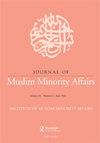加拿大劳动力市场的就业收入差距:性别、宗教和可见的少数民族地位的交叉点
IF 0.4
0 RELIGION
引用次数: 1
摘要
尽管平等立法和制度干预的发展,穆斯林在发达国家劳动力市场的就业结果仍然处于不利地位。大多数研究报告说,由于穆斯林,特别是西方国家的穆斯林妇女的种族和宗教背景,她们的失业率高,参与率低。然而,他们在就业收入方面的劣势仍未得到充分发掘。基于交叉性理论并使用2011年加拿大全国家庭调查(NHS),本研究考察了性别、宗教信仰和少数族裔身份与就业收入的关系。具体而言,本文测试了加拿大劳动力市场中不同宗教和可见少数族裔背景的员工之间的性别收入差距。研究结果显示,即使在控制了各种个人特征和人力资本之后,性别、宗教信仰和明显的少数民族身份之间的收入不平等依然显著。总体而言,女性、非白人和穆斯林员工的收入分别明显低于男性、白人和非穆斯林员工。相互作用分析表明,穆斯林和非白人雇员的就业性别收入差距低于非穆斯林和白人群体。本文章由计算机程序翻译,如有差异,请以英文原文为准。
Employment Income Gap in the Canadian Labour Market: Intersection of Gender, Religion and Visible Minority Status
Abstract Despite developments of equal legislation and institutional interventions, Muslims remain disadvantaged in employment outcomes in developed countries’ labour markets. Most studies report high unemployment and low participation rates of Muslims, particularly Muslim women in Western countries, due to their ethnic and religious backgrounds. However, their disadvantage in employment income is still underexplored. Based on intersectionality theory and using the 2011 Canadian National Household Survey (NHS), this study examines how gender, religious affiliation, and visible minority status are associated with employment income. Specifically, this paper tests the gender income gap among employees with different religious and visible minority background in the Canadian labour market. The findings reveal significant income inequalities across gender, religious affiliation, and visible minority status, even after controlling for a variety of individual characteristics and human capital. Overall, women, non-whites, and Muslims earn significantly less than men, whites, and Non-Muslim employees, respectively. Interaction analyses show that the employment gender income gap is lower among Muslim and non-white employees than non-Muslim and white groups.
求助全文
通过发布文献求助,成功后即可免费获取论文全文。
去求助
来源期刊

Journal of Muslim Minority Affairs
RELIGION-
CiteScore
1.40
自引率
0.00%
发文量
31
期刊介绍:
Journal of Muslim Minority Affairs is a peer reviewed research journal produced by the Institute of Muslim Minority Affairs (IMMA) as part of its publication programme. Published since 1979, the journalhas firmly established itself as a highly respected and widely acclaimed academic and scholarly publication providing accurate, reliable and objective information. Journal of Muslim Minority Affairs provides a forum for frank but responsible discussion of issues relating to the life of Muslims in non-Muslim societies. The journalhas become increasingly influential as the subject of Muslim minorities has acquired added significance. About 500 million Muslims, fully one third of the world Muslim population of 1.5 billion, live as minorities in 149 countries around the globe. Even as minorities they form significant communities within their countries of residence. What kind of life do they live? What are their social, political and economic problems? How do they perceive their strengths and weakness? What above all, is their future in Islam and in the communities of their residence? The journal explores these and similar questions from the Muslim and international point of view in a serious and responsible manner.
 求助内容:
求助内容: 应助结果提醒方式:
应助结果提醒方式:


